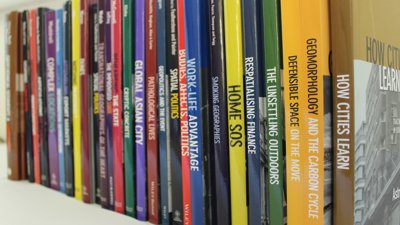By Madeleine Hatfield, Fiona Nash and Catherine Souch
What is open access?
‘Open access’ (‘OA’) is term that is frequently used within research. Many people define it simply as ensuring that research papers can be read by anyone without incurring a cost to the reader in the form of journals subscriptions or society memberships. However, open access actually extends further than this. It is about enabling people to read and use research for themselves. As JISC outline:
‘Open access can be more than making research available to read, but also allowing others to re-use that research. For example, allowing the content to be analysed using text mining or reused for commercial purposes.’
A key difference between making something free to read and making it open access is therefore in the copyright applied to the article. Almost all open access items have ‘creative commons’ copyright licences applied to them, which means that other ‘creators’ can use the research in any way that they would like, without paying any royalties, so long as they credit the original creator (although there are a few variants of these licences that are more restrictive).
Proponents of open access therefore argue that making research available in this way is good for society at large, because it allows other researchers to access and therefore build upon research more easily. This is particularly important when the research is publicly funded. Critics of open access often argue that it is an unfair system because it passes the cost onto the researcher, which not all researchers can afford, and that it also limits the rights that researchers have over their own data.
In the UK, the main research councils (RCUK) have stated that all research funded by them should be made OA in one form or another; the Higher Education Funding Council for England (HEFCE) have made a statement in support of all research being as widely available as possible, with OA requirements specified for publications submitted to the next Research Excellence Framework; and the EU Commission have also expressed strong support for OA. This follows the lead of organisations such as the National Institutes of Health (NIH) in the USA, Max Planck Society and the Wellcome Trust.
Types of open access
There are two main strands of open access OA, both of which operate on electronic versions of publications:
-
‘Gold’ OA, where the author or their funder pays a charge (known as an Article/Book Processing Charge APC/BPC) to make the publication freely accessible and resuable.
-
‘Green’ OA, where publications are archived in a free-to-access repository either in their published form, or in the final form that they were accepted in but before they were published. Sometimes publishers will enforce an embargo period before a publication can be made available in this manner.
There are many helpful resources for identifying OA and ‘hybrid’ publications (subscription platforms with an OA option), including searchable indices setting out different publishing models such as the Directory of Open Access Journals and SHERPA/RoMEO.
Funding open access
Accessing funds to pay for APCs/BPCs is a challenge for many. This has become easier over recent years, as institutions, funders and even whole countries have entered into agreements with publishers to pay OA costs on behalf of their researchers. There are also many different discounts and waiver schemes, for researchers based in low- and middle-income countries. Information about these can be viewed on the websites of individual publishers/journals.
As an author you should therefore check with your institution (information likely is online or consult your library) and with the publisher to find out what resources are available to you and, importantly, to make sure you are fulfilling all institutional/funder requirements, particularly for depositing copies of accepted articles in repositories.
Seven things you can do to reach wider (academic) audiences
-
Create a short summary of your work, include your key findings and write it in a way that will be accessible for a wider audience.
-
Publish a post about your article to your/departmental/research group blog. If you have published in a RGS-IBG journal, submit a post to Geography Directions.
-
Tweet about your paper through your own account or through a Society or department account if possible.
-
Contact your department’s press office to see if your article is relevant for any publicity opportunities – do this when the paper has been accepted for publication.
-
Talk about your paper at a conference, with colleagues and personally raise awareness, include a link in your email signature.
-
Create an account on an academic network (e.g. ResearchGate, Academia. edu, Mendeley), to highlight your work to thousands of fellow academics
-
Use services such as Kudos to highlight the relevance of your work, share through email and social media, and measure downloads, citations and altmetrics.
About this guide
Publishing is a crucial, but sometimes daunting and unexplained, part of academic life. All academic geographers are supposed to do it, but there are few formal guidelines about how best it should be done. Many of us discover how to publish by trial and error or through the mentoring and support of colleagues. Publishing and academic landscapes also change, presenting new challenges to established academics. The publishing and getting read guides have four main aims: to provide clear, practical and constructive advice about how to publish research in a wide range of forms; to encourage you to think strategically about your publication profile and plans; to set out some of the opportunities and responsibilities you have as an author; and to support you in getting your published research read.



